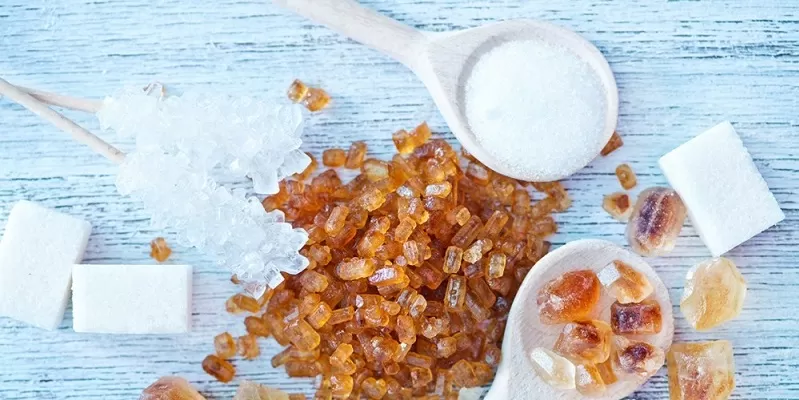
Compare fructose and sugar | Important differences
Nutritionists have long been trumpeting the dangers of sugar, calling it “white death,” so in recent years, manufacturers have increasingly resorted to sweeteners that would be safe and at the same time not inferior in sweetness. Most often, the choice is made in favor of fructose. Is it so harmless and is it worth giving up sugar in its favor? Answers to questions were found out by our experts.

Fructose and sugar: what are they and what is the difference
First, let’s define exactly what fructose is and how it differs from sugar. But first, about the latter, because not everyone has the right idea about it. It is a carbohydrate consisting of fructose and glucose, easily soluble in water. It is more correct to call it sucrose (it is considered a polysaccharide).
Fructose is a monosaccharide, meaning it has a simpler structure. It is usually found in sucrose and is called fruit sugar. Accordingly, fructose is absorbed into the blood very quickly. An important point: when assimilating fructose, the body does not use insulin. It is for this reason that sweets, which include this monosaccharide, are safe for people with diabetes.
As for calories, fructose and sucrose are almost identical in this indicator, while the former is much sweeter: the approximate ratio of monosaccharide and sugar in terms of sweetness is 3:1.
ON A NOTE. Fructose is recommended as a dietary supplement in place of sucrose for people with diabetes. Most often it is added to tea, sweets, some main dishes. But it must be remembered that the monosaccharide itself is high in calories: its excessive use can lead to rapid weight gain, and in some cases to a change in the lipid composition of the blood.
About the properties of fructose and sugar
When consumed in moderation, sugar can certainly bring benefits, and almost immediately after it enters the body:
-
The product quickly breaks down into components — glucose and fructose. Glucose, in turn, reaching the liver, stimulates the production of acids that remove toxins from the body. It is for this reason, by the way, that drugs containing glucose are prescribed for liver diseases;
-
Sucrose after splitting activates brain activity, has a beneficial effect on the functioning of the nervous system;
-
Sucrose has a calming and invigorating effect, showing itself well as an antidepressant. With moderate use of the product, you can forget about anxiety, stress and other manifestations of mental instability (all this is possible due to the hormone serotonin contained in the product).
Despite all the advantages of sugar, we must not forget about the possible harm of the product when consumed in significant quantities:
-
The body becomes unable to process excess sugar and «deposits» it in fat cells;
-
If there is a predisposition to diabetes, an excess of sucrose can provoke the disease;
-
Frequent consumption of sucrose leads to the fact that the body begins to overuse calcium, which is needed to process the sweet white matter.
Well, not to mention fructose. Like sucrose, it has certain advantages:
-
When splitting does not increase the level of glucose in the blood;
-
Unlike sugar, it does not negatively affect tooth enamel;
-
The glycemic index of the substance is very low, while the level of sweetness is much higher than that of sucrose — there is no better option for diabetics.
ON A NOTE. Although fructose is considered a good option for those suffering from diabetes, it is important to strictly follow the doctor’s recommendations, constantly monitor glucose levels, do not abuse the product (because its excess leads to conversion to fatty acids), and always be aware of the accompanying diet.
Despite all the advantages, the monosaccharide also has its negative points:
-
With the complete replacement of sugar with it, persistent addiction can occur. For this reason, the product begins to have a negative effect on the body, and all because the glucose level gradually decreases to a critically low level;
-
Again, due to the absence of such a substance as glucose in the composition of the monosaccharide, the body cannot be satiated (as a result, the development of endocrine pathologies);
-
If you do not control the amount of monosaccharide eaten, it is likely that a toxic liver process will develop.
Let’s make a brief summary. First, sugar is absorbed longer and more difficult. Secondly, sugar requires the participation of insulin for its breakdown, but fructose does not. Thirdly, sugar is not as sweet as it is. Well, and finally, unlike a monosaccharide, it can give the body a charge of “fast” energy.
Добавить комментарий
Для отправки комментария вам необходимо авторизоваться.